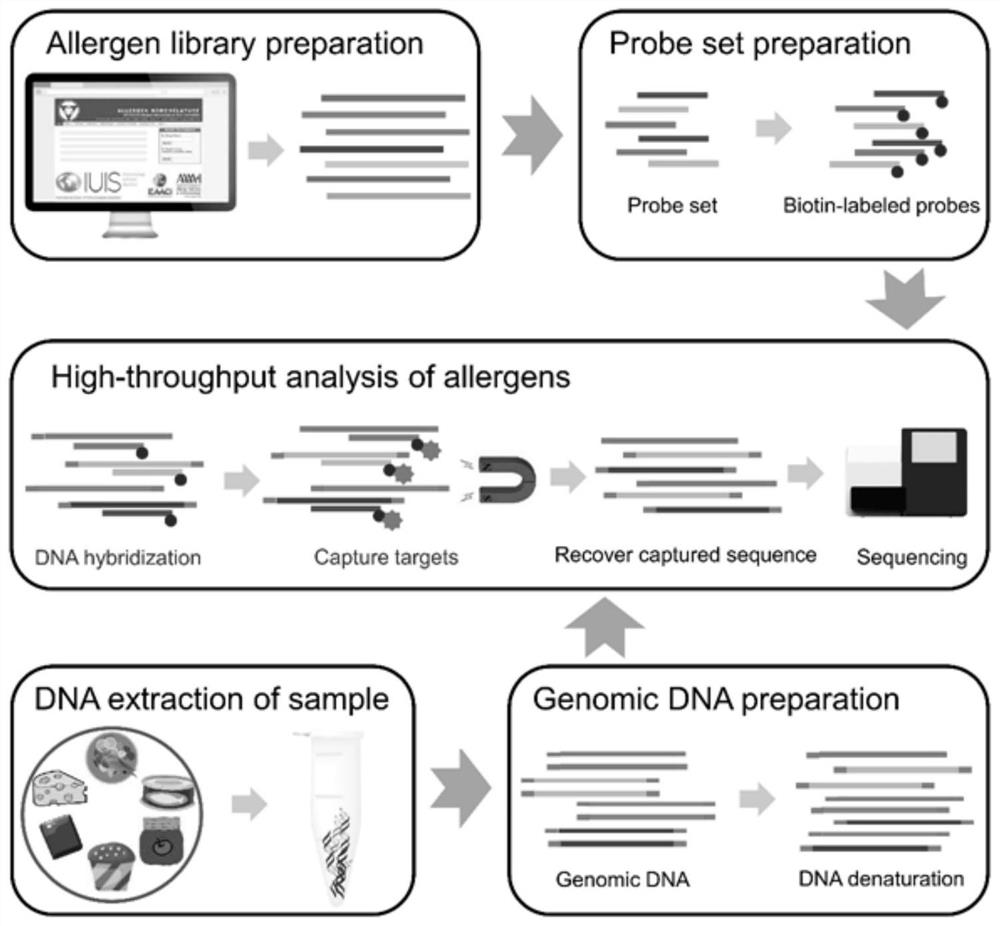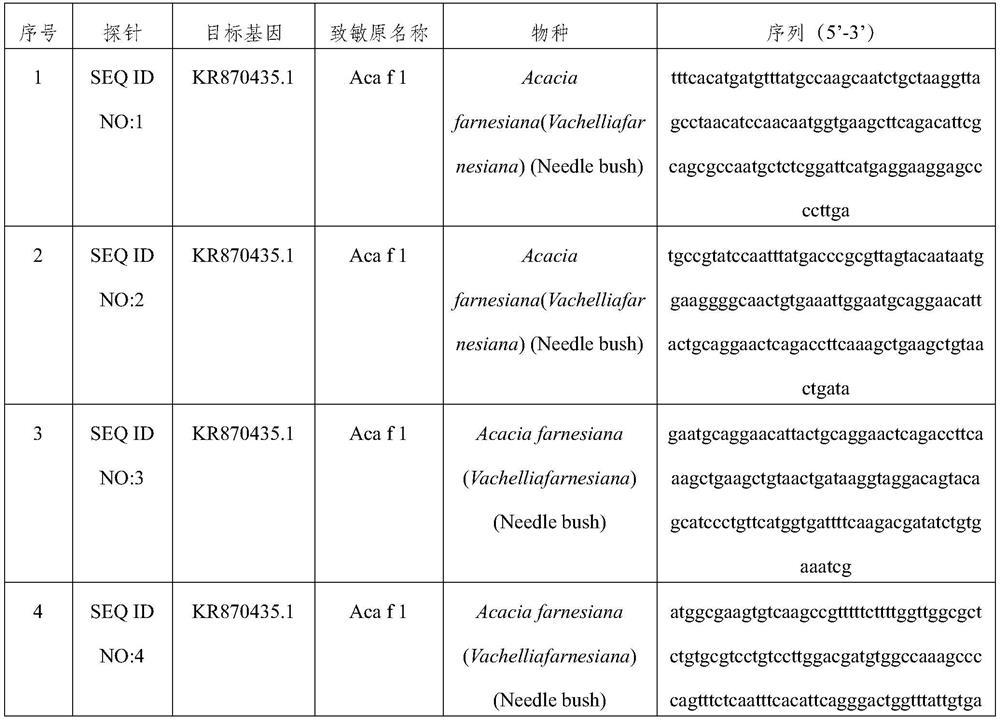Capture probe set for detecting food allergens as well as preparation method and application of capture probe set
A technology for capturing probes and allergens, applied in the field of capturing probe sets, can solve the problems of detecting allergenic components and allergenic pollutants, and achieve the effect of ensuring richness, high application value, and ensuring capture efficiency
- Summary
- Abstract
- Description
- Claims
- Application Information
AI Technical Summary
Problems solved by technology
Method used
Image
Examples
Embodiment 1
[0020] Conventional allergen detection methods (ELISA, RT-PCR, and LC-MS) cannot achieve high-throughput detection of known allergens and screening of unknown allergens in complex food systems.
[0021] This example proposes a method for preparing a capture probe set for detecting food allergens. Due to the ultra-high sequencing capability of next-generation sequencing, multiple different genomic regions can be analyzed simultaneously to obtain genomic mutations, insertions, Deletion and structural variation, so that all plants, animals and fungi in complex food systems can be identified. This example is based on next-generation sequencing of SNP (single nucleotide polymorphism). The target sequence targeted sequencing technology is a strategy for capturing, enriching and sequencing target genes. The target gene can be captured and enriched through the DNA hybridization reaction between the probe and the target gene, which can effectively reduce the cost of sequencing and impro...
Embodiment 2
[0029] This example proposes a capture probe set for high-throughput sequencing to detect food allergens, including the capture probe set prepared by the preparation method described in Example 1. More specifically:
[0030] The capture probe set has 7482 single-stranded probes, the length of the single-stranded probes is 100-130 bp, and the CG content of the single-stranded probes is 30-70%.
[0031] The nucleotide sequences of the single-stranded probes are shown in SEQ ID NO: 1 to SEQ ID NO: 7482.
[0032] A set of capture probes proposed in this example is shown in Table 1 below.
[0033] Table 1: Allergen gene trap probe sets.
[0034]
[0035]
Embodiment 3
[0037] refer to figure 1 First, design probe sets based on allergen gene fragments obtained from the International Union of Immunization Union (IUIS) and the World Health Organization (WHO) website (WHO / IUIS, www.allergen.org); secondly, construct a sample library ; Third, use the probe set to capture and enrich the allergen gene in the sample library, and perform sequencing to detect the allergen.
[0038] This embodiment proposes an application of a capture probe set for detecting food allergens, including high-throughput sequencing for detecting food allergens, which specifically includes the following steps,
[0039] Synthesis of biotin-labeled probes was commissioned by Sangon Bioengineering (Shanghai) Co., Ltd.;
[0040] Sequencing library construction: Ultrasonic fragmentation of sample DNA, the fragmented DNA is purified by magnetic beads, followed by end repair, connection of sample adapters, purification of ligation products, library amplification, and library purif...
PUM
| Property | Measurement | Unit |
|---|---|---|
| molecular weight | aaaaa | aaaaa |
Abstract
Description
Claims
Application Information
 Login to View More
Login to View More - R&D Engineer
- R&D Manager
- IP Professional
- Industry Leading Data Capabilities
- Powerful AI technology
- Patent DNA Extraction
Browse by: Latest US Patents, China's latest patents, Technical Efficacy Thesaurus, Application Domain, Technology Topic, Popular Technical Reports.
© 2024 PatSnap. All rights reserved.Legal|Privacy policy|Modern Slavery Act Transparency Statement|Sitemap|About US| Contact US: help@patsnap.com










